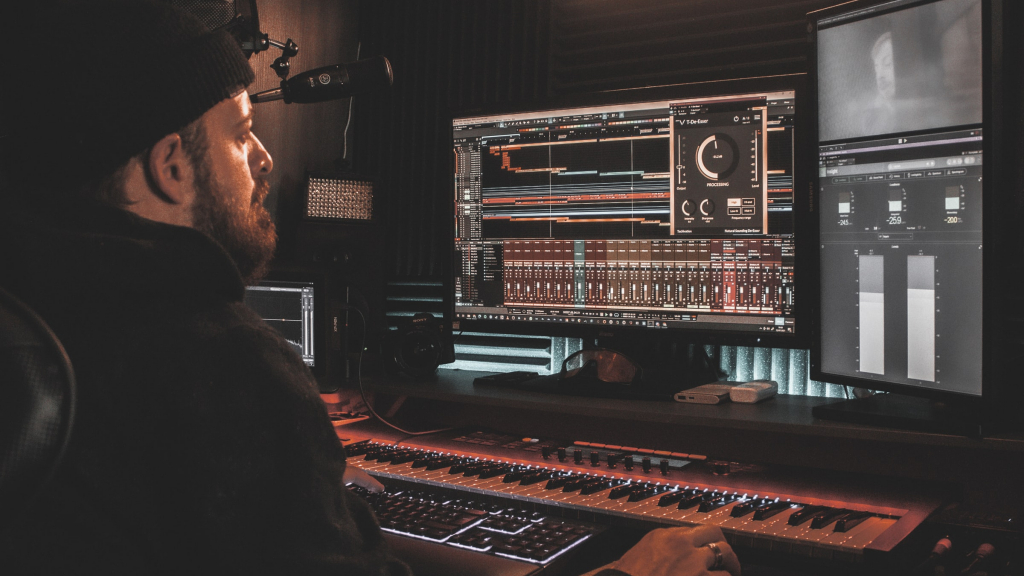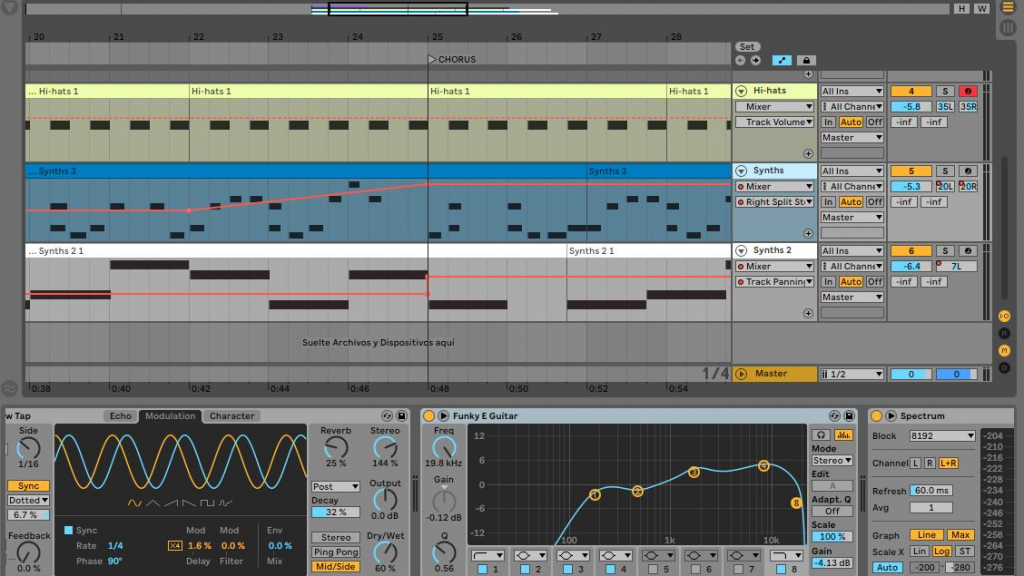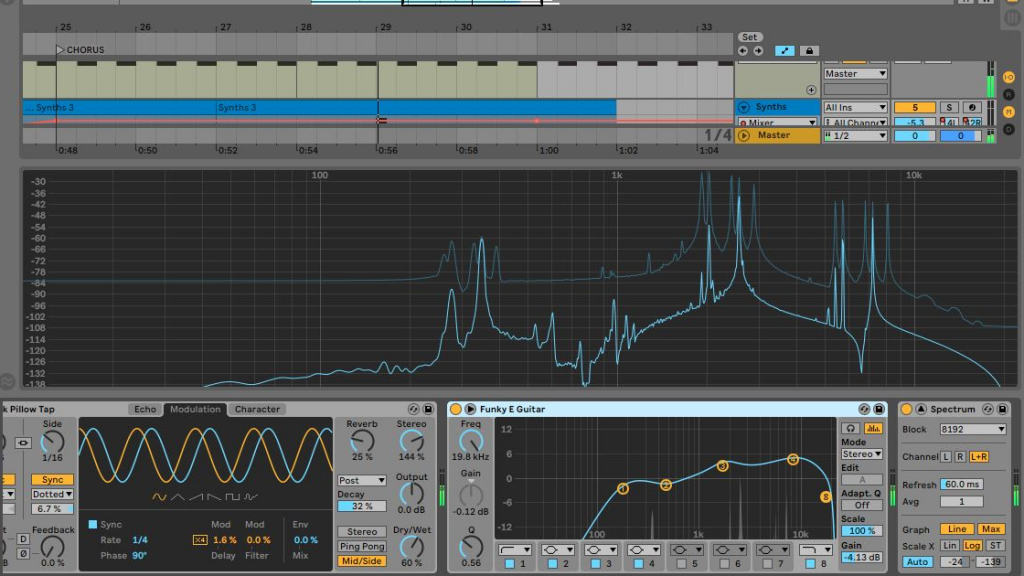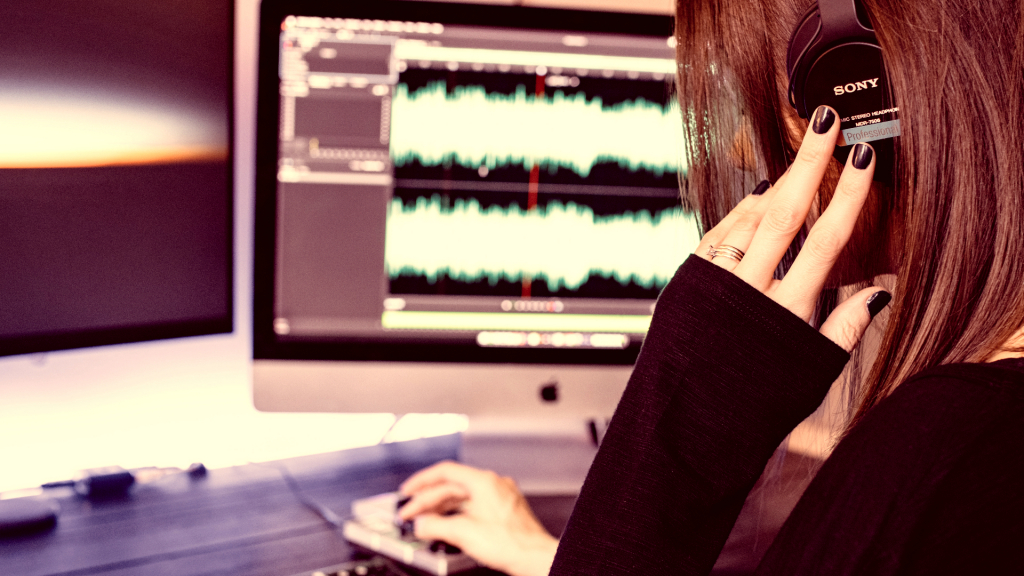Panning is an important tool when mixing your tracks. It gives instruments their own space in the stereo field and it can become one of your strategies to eliminate masking, along with EQ and other processing, by moving sounds out of the way of other sounds so the listener can clearly define them.
50 Top Industry Music Production Tips You Must know
There are no fixed and fast rules for panning, just guidelines. We will revise some recommended advice you may have already heard many times (e.g. put your lows in mono) and have a look at other tips that will make you have a refreshed mind when taking decisions about panning in your tracks.
1. Mix mostly in mono, pan later. And with moderation.
One first tip is to know that it’s better to process in mono. Mixing that way helps you work on separation with EQ and other processing, rather than relying on panning. There is the danger that if we are panning from the very beginning we don’t notice how some frequencies of different instruments may be clashing in the frequency spectrum. Also, there is the danger that we overuse panning and open too much. Keep in mind that there is processing such as EQ, reverb and delay that can also create a sense of physical location and widen the stereo image, so take them into account when panning.

You may ask why we should care if two instruments have the same frequency content if they are separated in the stereo field, or why we should be moderate when opening the instruments in the stereo field. And the thing is that you should, because not every music player will respect the panning you have set to your track and you could find a horrible surprise when, for example, you listen to your track in a club where the system tends to mono everything.
If you’re looking to keep learning more about the music industry, there are certain essential concepts you need to know before moving forward with the rest of the article. These concepts are used by Grammy-winning producers, industry professionals, and the best artists in the business. Whether you’re a musician, producer, engineer, or simply a music lover, these 50 tips will help you develop a solid base of knowledge and skills. From understanding the importance of rhythm and melody to improving the art of mixing and mastering or learning how to market yourself. So, if you’re serious about your music career, make sure to go through this list and start building a strong foundation for your future success.
2. Leave your low frequencies at the center.
Nowadays everyone wants stereo in everything but we should not forget that mono is very powerful and really has a lot of energy. So, if you want your low end to sound punchy, you should try to keep it mono. In fact, when the bass is too wide it is very unstable and inaccurate, so it doesn’t sound good.
It’s a good idea to have the bass of the mix around the fundamental frequencies, maybe below 100 Hz more or less, totally mono. For instruments that have both low and high frequency content you can leave its high frequencies wide while keeping the low ones mono.
3. Be creative with a clear purpose for every decision.
As we mentioned at the beginning, there are no fixed rules on how to pan your instruments. In fact, if you are creative enough, you may be able to tell a story throughout your track by using panning to create contrast, build tension, release tension, etc.
This means, however, that you must have a clear idea of what you want in your track. Too much panning around without a purpose can be confusing for the listener. Especially if you are using automation and changing the panning of an instrument several times. Instead, use automation to create occasional unexpected but pleasant surprises. For example, some hi-hats that get wider in the build-up, a synth that gets wider in the chorus, or some toms that get even more centered and quite in a drop.
4. Use automation and play with panning symmetry.

We just mentioned automation in the previous tip and saw that it can give us variety when it comes to the panning of just one instrument. It lets you apply a gradual or a sudden more radical change.
You can combine this powerful tool with the concept of symmetry. It means that you consider whether you are panning an instrument equally open left and right, or you are just leaving it on one of the sides. Also, consider balancing this instrument on one side with another that complements it on the other side, or if you prefer not because you want to make it very prominent. Automation can make these symmetrical or asymmetrical effects even more effective to create different emotion journeys for the listener.
If you want to get more from your panning and stereo widening techniques this is only just the beginning, check out how to get more depth and space in your mix from top class instructors to watch at your own pace
5. If you are mixing electronic music such as techno, be subtle.

If you listen to techno or house tracks you’ll realise there isn’t much panning on them. It is club music and has to work on mono sound systems without losing anything. The panning is very subtle and with clear purposes. E.g., if the clap and snare are landing on the same beat and one is masking the other, then pan one sound slightly to each side, in a way they still sound very much centered. You can apply some panning to the hi-hats to give them a bit of depth, but again, very slightly if you don’t want to lose their presence. We’d rather try first with reverb in order to widen them, in fact.
You can be creative playing save with this tip: leave a layer of you instrument in the center while duplicating it to the sides in a lower volume and with subtly different effects. This really helps to thicken your synth lines and bring them to the top of the mix, while making sure that your synth will sound even if your track is played on a mono sound system.
6. Analyze the frequencies to check your panning.
If you are not sure where to pan your instruments or if you are not sure if you have made a good decision when wanting to be creative with your track (and you just masked some sounds), just check your frequencies. Use a spectrum analyzer plug-in that lets you monitor the frequency content of your audio signal in real time.

So, if you have two sounds that are fighting for space in the same frequency, and you can’t do further EQ corrections, then pan one to the left and one to the right. How much, you may ask? The analyzer will help you with that. Your DAW will have one for sure, such as the Spectrum in Ableton Live. If not, try the Voxengo Span or the Blue Cat FreqAnalyst. They are both free external plugins.
7. Check your pans on different speakers and headphones.
What sounds good on loudspeakers doesn’t always sound good on headphones or earbuds, particularly hard pans. If you decided to be creative with some instrument by making it very wide, you may find that it gets lots in some music players. You should take this into account when taking final decisions.

8. Check your levels after panning.
You may find that the level of an instrument varies after panning it. It can be a real level change, which you can actually see in the level meters of your DAW, or a perceptual and subjective change in relation to the rest of the track. Therefore, it is always a good idea to check the level of your instruments while panning them. But it is even a better idea to gain stage again your whole track, with fresh ears, after you think you have applied most of your panning.
Also, double check the level of your instruments turning your whole track in mono. You may find that the levels you had while mixing in mono, as we recommended in the first tip, change even more radically on a mono sound system.






 50 Industry Music Production Tips You Must Know
50 Industry Music Production Tips You Must Know




